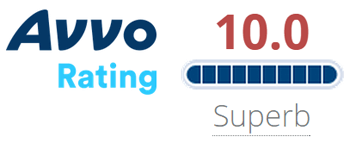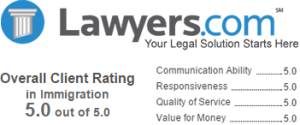 Are you eligible for political asylum?
Are you eligible for political asylum?
You can obtain political asylum in the US if you can demonstrate that you have a well-founded fear of persecution if you were forced to return to your country. You must apply to the USCIS or, if you are in removal proceedings, before an Immigration Judge.
You need to show that you might be persecuted because of your political opinions or activities. Your fear of persecution can either be from the government in power or from a group or organization that the government is unwilling or unable to control.
You must submit form I-589. There is no filing fee. You should submit sufficient evidence to support your application. For example, attach a detailed affidavit, evidence of past persecution if any, country human rights reports, newspaper articles specific to your situation, proof of threats against you and any other documents showing that your fears are well-founded.
Before you submit your I-589 packet, you may find it helpful to read 4 Tips to Help You Win Your Case.
If your case is in Immigration Court, it is recommended that you obtain the services of an expert witness who can testify about the human rights abuses in your country. The expert should testify whether you could be subject to persecution if you were forced to return.
Client Reviews

A Life Changing Law Firm
“My family and I were clients of Mr. Carl Shusterman and I can honestly say that he had a tremendous impact on our lives - a very positive one. Even when my parents had been denied and they had been told to pack and get out of this country, Mr. Shusterman rushed to find an alternative in order to ensure that my parents could stay.”
- Diana Cabrera, Reno, Nevada
Read More Reviews
Zoom Consultations Available!
Generally, you must apply for political asylum within one year of your admission to the US, although there are exceptions to this requirement. For instance, the law allows that government to waive the one year bar where an applicant can demonstrate “changed circumstances” which materially affect his eligibility for asylum.
The regulations at 8 CFR 208.4 define changed circumstances as follows:
(i) The term “changed circumstances” in section 208(a)(2)(D) of the Act shall refer to circumstances materially affecting the applicant’s eligibility for asylum. They may include, but are not limited to:
(A) Changes in conditions in the applicant’s country of nationality or, if the applicant is stateless, country of last habitual residence;
(B) Changes in the applicant’s circumstances that materially affect the applicant’s eligibility for asylum, including changes in applicable U.S. law and activities the applicant becomes involved in outside the country of feared persecution that place the applicant at risk; or
(C) In the case of an alien who had previously been included as a dependent in another alien’s pending asylum application, the loss of the spousal or parent-child relationship to the principal applicant through marriage, divorce, death, or attainment of age 21.
If you have suffered past persecution in your country, this is an important factor which should be documented in your application.
ASYLUM SUCCESS STORIES

- Lawsuit Forces USCIS to Schedule Interview
- Iranian Woman Who Converted to Christianity
- Winning Your Case in Immigration Court
Resources for Political Asylum
The manual is divided into five (5) sections:
Section I, “Background Information,” lists references with which all asylum personnel should be familiar in order to process an asylum application.
Section II, “The Affirmative Asylum Application,” follows the processing of an application from the point at which an applicant receives a blank asylum application, through the issuance of a decision by U.S. Citizenship and Immigration Services (USCIS), an agency within the U.S. Department of Homeland Security (DHS).
Section III, “Expanded Topics,” the lengthiest section, provides more detail on some topics referenced in Section II, and includes topics that may cause an asylum application to be handled differently from the norm. While it is not possible to anticipate all possible variations, this section addresses the most common.
Section IV, “How To…”explains how to prepare certain documents that Asylum Office personnel issue to applicants in support of a decision to approve, deny, or refer an asylum application.
Section V, “Appendices,” contains the appendices referred to in the manual.








